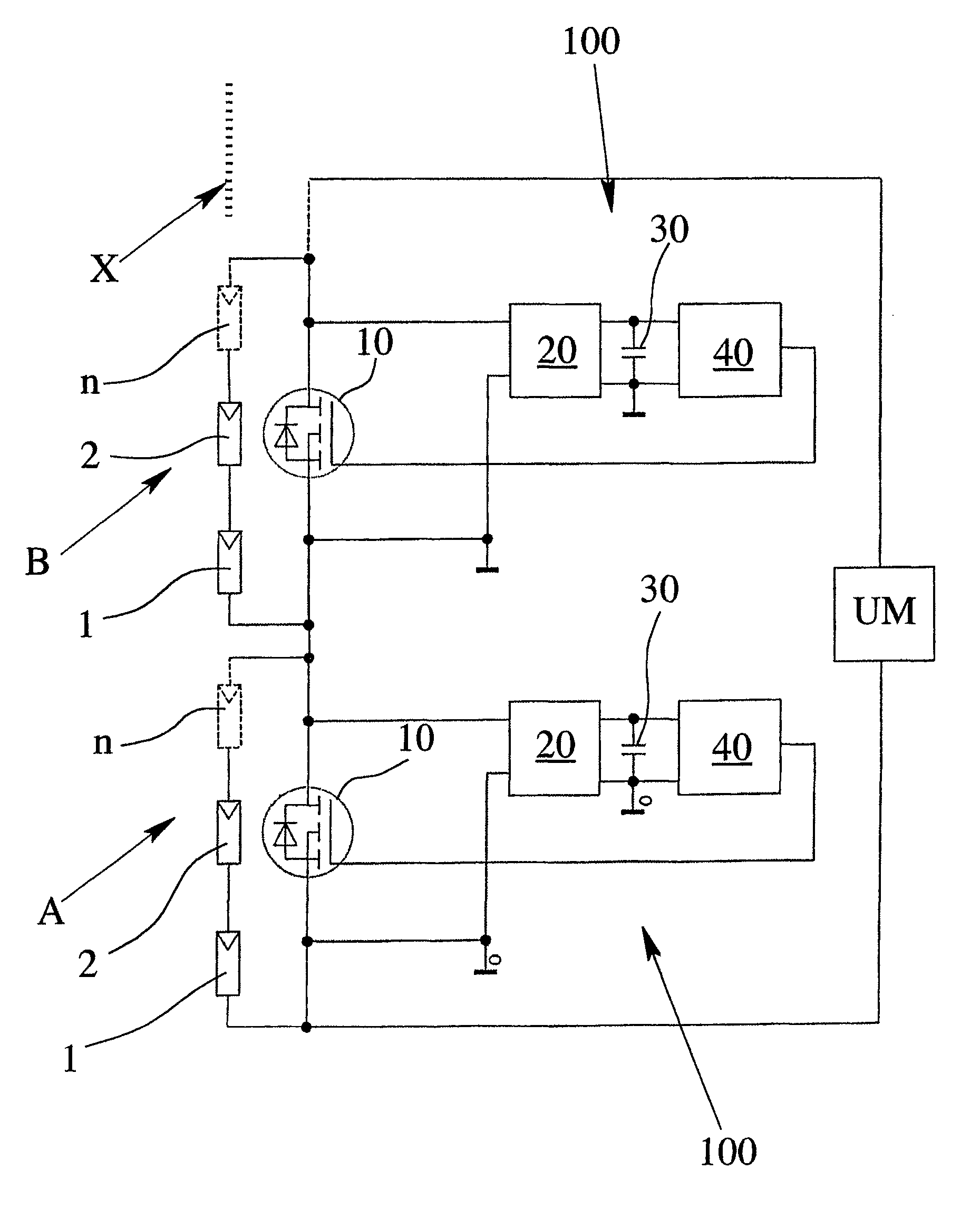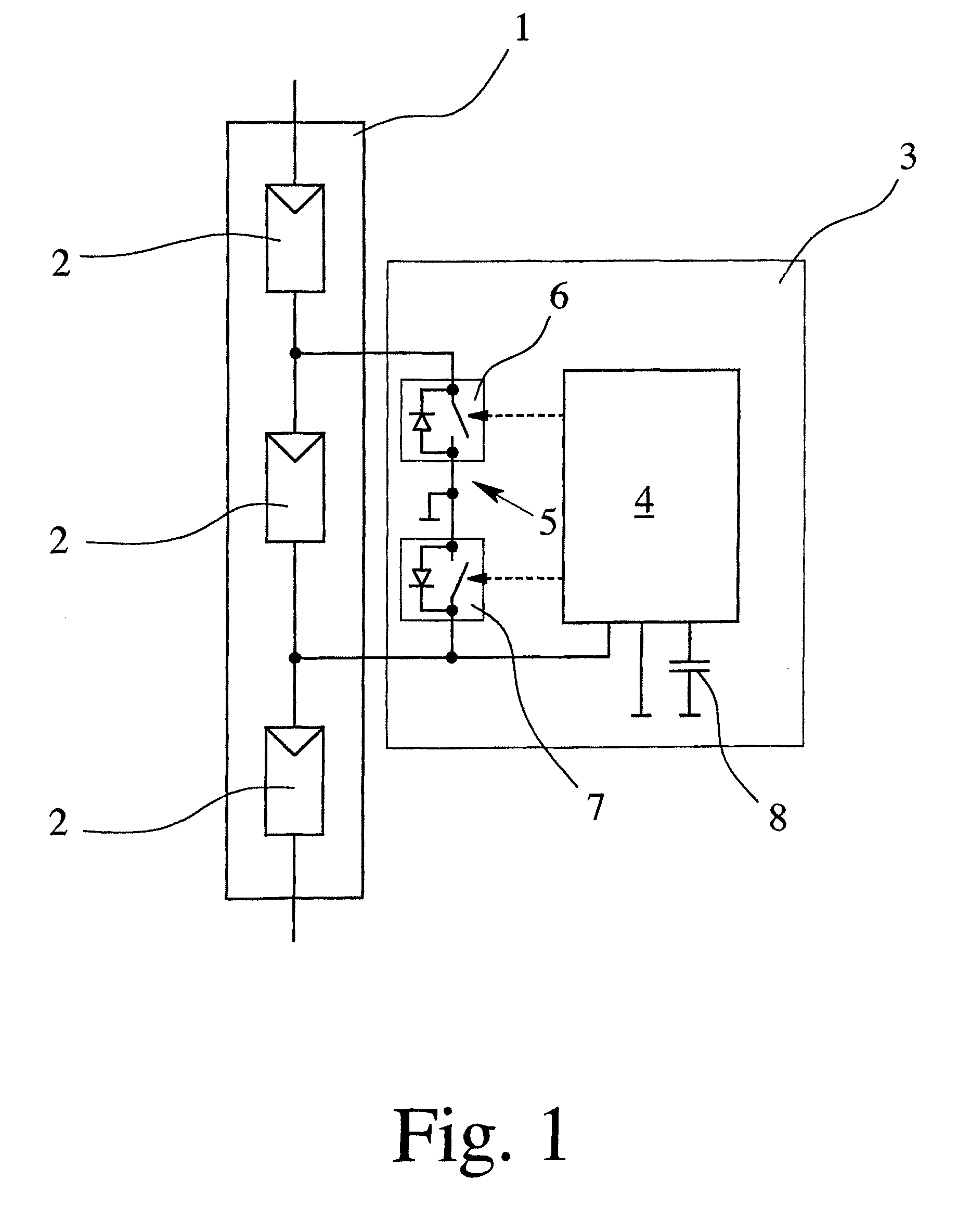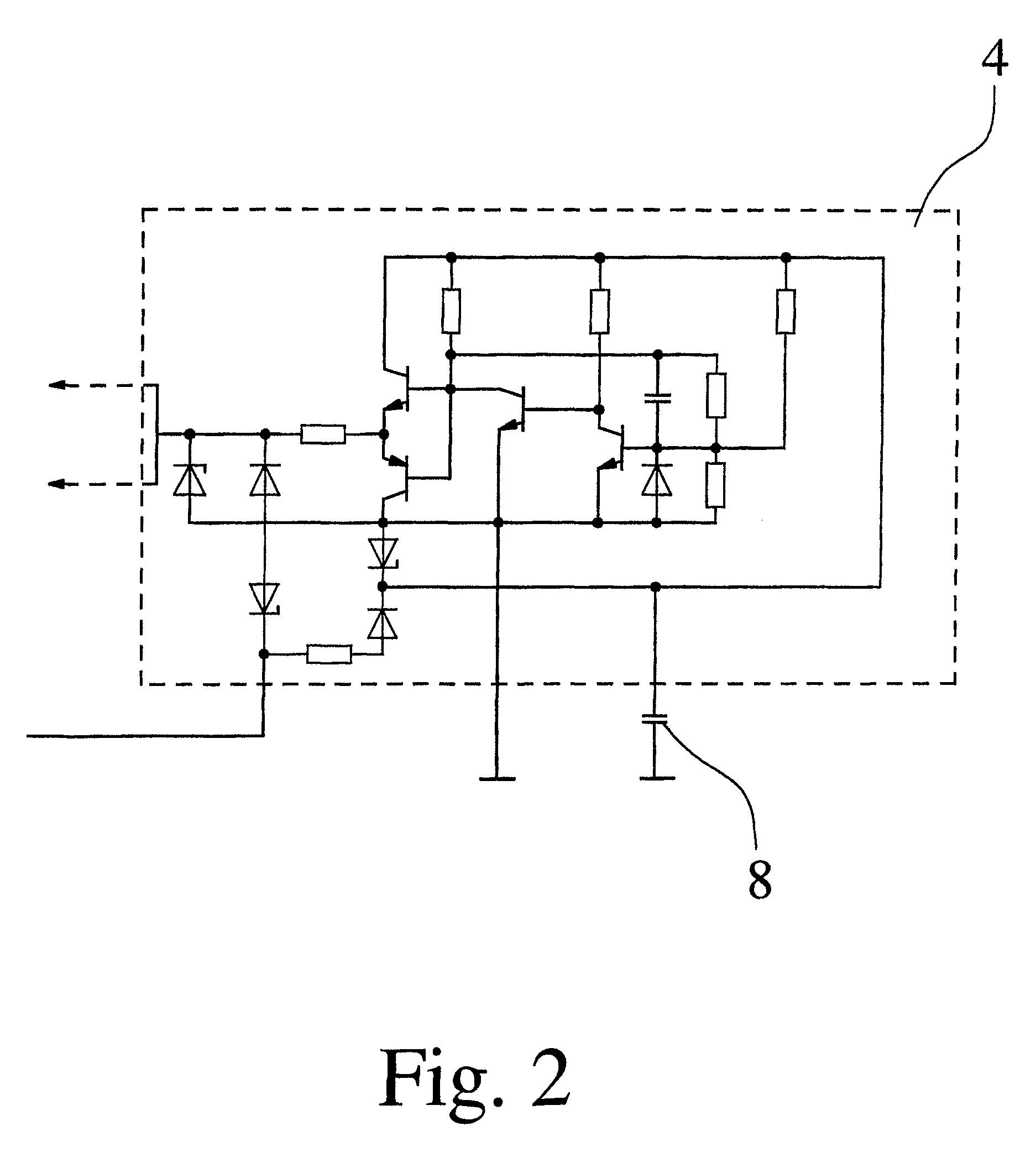Protective circuit
a protection circuit and circuit technology, applied in relays, pv power plants, transportation and packaging, etc., can solve the problems of affecting the power output of the module, the output voltage of individual solar cells is typically too small to be able to operate electrical devices, and the parallel connection of solar cells has not prevailed, so as to minimize the risk and small space
- Summary
- Abstract
- Description
- Claims
- Application Information
AI Technical Summary
Benefits of technology
Problems solved by technology
Method used
Image
Examples
Embodiment Construction
FIG. 1 shows a solar cell module 1 which has a plurality of series-connected solar cell strings 2 which, for their part, are comprised of several, likewise, series-connected solar cells which are not shown individually. The provision of three strings 2 for the solar cell module 1 is used purely an example. Likewise, safeguarding via a protective circuit according to one preferred embodiment of the invention is shown, by way of example, for only one of the strings 2. There can, of course, corresponding safeguarding can be provided for each string 2.
As already mentioned, the objective is to devise a protective circuit which ensures that, in the case of shading of the string which is being safeguarded, current bypass for this shaded string is achieved, so that the solar cell module 1, on the one hand, continues to be ready for operation, i.e., delivers a current, and on the other hand, damage of the shaded string 2 is prevented. For this purpose, the protective circuit has a controlled...
PUM
 Login to View More
Login to View More Abstract
Description
Claims
Application Information
 Login to View More
Login to View More - R&D
- Intellectual Property
- Life Sciences
- Materials
- Tech Scout
- Unparalleled Data Quality
- Higher Quality Content
- 60% Fewer Hallucinations
Browse by: Latest US Patents, China's latest patents, Technical Efficacy Thesaurus, Application Domain, Technology Topic, Popular Technical Reports.
© 2025 PatSnap. All rights reserved.Legal|Privacy policy|Modern Slavery Act Transparency Statement|Sitemap|About US| Contact US: help@patsnap.com



